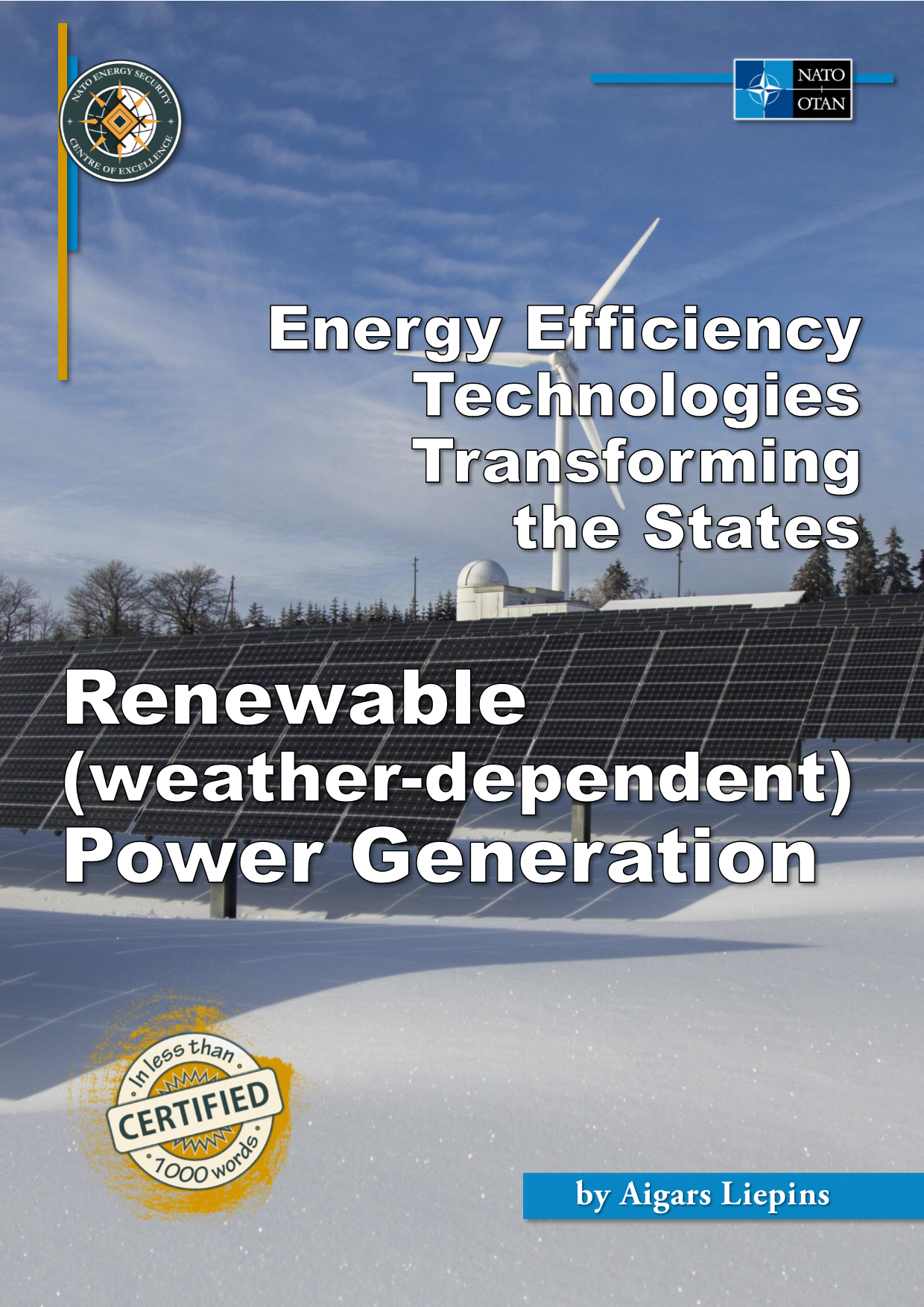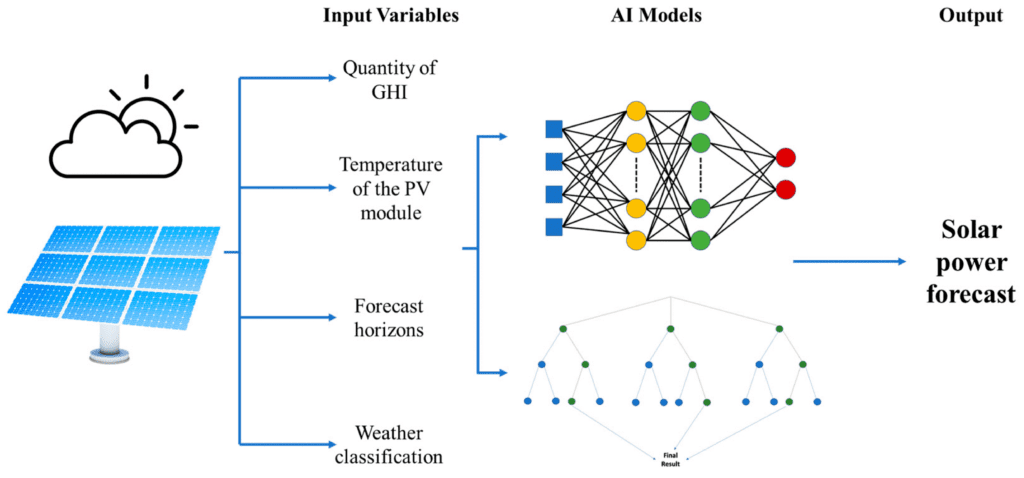
Weather-dependent power generation resources generally rely on natural climate and weather conditions. These resources are sensitive to weather patterns, including sunlight, wind speed, and precipitation.
1. Solar Power.
Solar power is one of the most mature and widely adopted renewable energy sources. Photovoltaic technology converts sunlight directly into electricity, and advances in materials and manufacturing processes continue to increase efficiency and reduce costs. Concentrated Solar Power, which uses mirrors or lenses to concentrate sunlight onto a small area for electricity generation, is another technology gaining attention. It’s important to note that the field of solar power is dynamic, with ongoing research and development. The latest developments in Solar Power generation include:
Tandem Solar Cells, also known as multi-junction solar cells, have gained attention for their potential to increase solar panels’ efficiency significantly. These cells stack multiple layers of solar materials on each other, each designed to capture different portions of the solar spectrum. Perovskite-silicon tandem layer cells, in particular, have shown promise in laboratory settings, combining the efficiency of silicon with the ease of manufacturing perovskite materials. These innovative cells can transform approximately 33,7% of incident sunlight into electrical energy.

Source: https://www.pveducation.org
Bifacial Solar Panels can capture sunlight from both the front and rear sides, increasing energy yield. These panels are designed to capture reflected sunlight from surfaces like snow, water, or nearby buildings. Bifacial technology has become more widespread, with improvements in materials and installation techniques. Bifacial solar panels are typically more expensive than traditional monofacial solar panels but can generate up to 30% more energy.

Source: https://www.hydesource.com
Floating Solar Farms, with solar panels installed on bodies of water, have gained popularity as a solution for utilizing available space and reducing land use conflicts. These systems can be deployed on ponds, reservoirs, and other water bodies, offering advantages such as reduced water evaporation and improved panel cooling for increased efficiency.

Source: https://www.dsneg.com
Perovskite Solar Cells have shown rapid progress in terms of efficiency and cost. These materials are easier and cheaper to produce than traditional silicon solar cells. Ongoing research focuses on improving the stability and scalability of perovskite solar cells for commercial applications. On 6th March 2024, PV magazine reported that a research group at the National University of Singapore has fabricated a triple-junction perovskite-perovskite-silicon solar cell that integrates cyanate ions in an ultra-wide-bandgap perovskite absorber and achieved a record-breaking efficiency of 27.1%.

Source: https://www.energy.gov
Solar-Integrated Building Materials: Integrating solar cells into building materials is gaining traction. Experts see the potential to seamlessly incorporate solar technology into solar roof tiles, windows, and facades. This approach aims to make solar power generation integral to construction and urban planning.

Source: https://www.frontiersin.org
Advanced Solar Tracking Systems, which orient solar panels to follow the sun’s path throughout the day, are becoming more sophisticated. Dual-axis and even three-axis trackers improve energy capture by optimizing the angle of incidence between sunlight and solar panels. These systems enhance efficiency by maximizing the time the solar panels face direct sunlight.

Source: https://www.researchgate.net
Researchers are working on developing transparent solar cells and integrating them into windows and glass facades without obstructing the view. These cells typically use organic or thin-film materials, allowing for dual functionality—harvesting solar energy while maintaining transparency.

Source: https://www.weforum.org
Solar-Storage Integration: The combination of solar power generation with energy storage technologies, such as advanced batteries, is becoming more prevalent. This integration addresses the intermittency of solar energy, enabling the storage of excess energy during peak production times for use during periods of low sunlight.

Source: https://www.researchgate.net
Artificial Intelligence (AI) in Solar Energy: AI and machine learning applications are being used to optimize the operation and maintenance of solar power plants. Predictive analytics, fault detection, and performance optimization algorithms help increase efficiency and reduce downtime by anticipating and addressing potential issues.

Source: https://www.mdpi.com
Community Solar Projects are gaining popularity. These projects allow individuals or communities to invest in and benefit from shared solar installations. They enable access to solar energy for those needing more suitable rooftops or the financial means to install their solar panels.
2. Wind Power.
Wind turbines generate electricity by harnessing wind energy. Wind speed is crucial for their operation, and extreme weather events such as hurricanes can impact wind turbine performance. Onshore and offshore wind farms have become prevalent in many regions. Advances in turbine design, materials, and tower height have significantly increased the efficiency of wind power. Floating wind turbines, designed to operate in deep waters where conventional turbines are not feasible, represent a promising development.
3. Hydropower.
While hydropower is not solely dependent on weather conditions, water availability in rivers or reservoirs is by precipitation and snowmelt. Traditional hydropower has been a reliable source of electricity for decades, but innovations aim to enhance its efficiency and minimize environmental impact. In-stream turbines and run-of-river systems reduce the need for large dams, mitigating the ecological impact while generating power.
4. Geothermal Power.
Geothermal energy is relatively less affected by weather conditions than solar or wind power. Geothermal energy taps into the Earth’s internal heat to produce electricity. Enhanced Geothermal Systems (EGS) involve injecting water into hot rock formations to create steam, which drives turbines. This technology can expand geothermal power generation to regions without naturally occurring geothermal resources.
5. Tidal and Wave Energy.
The state of the sea directly influences these forms of energy. Tidal and wave energy technologies harness the energy from ocean tides and waves to generate electricity. Tidal stream generators and oscillating water columns are emerging technologies in this field. These technologies have the advantage of being predictable and reliable, as tides are frequent and appear regularly.
Conclusion.
Weather-dependent power generation technologies play a pivotal role in shaping the ongoing transformation of the energy sector toward a more sustainable and resilient future. As states and military forces increasingly recognize the strategic importance of adopting these advanced power generation methods, sustaining ongoing research, bolstering investments, and providing robust policy support is imperative. Overcoming technical challenges, enhancing economic viability, and ensuring widespread implementation are essential components of harnessing the full potential of these technologies, thereby fortifying the commitment to a greener and more secure energy landscape.